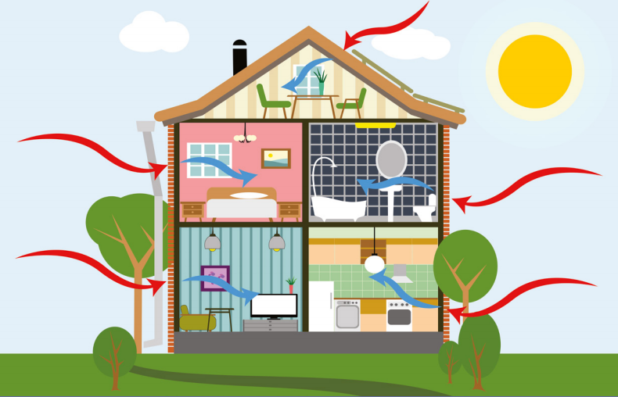
Energy and Waterproofing
Home construction and renovation is a pretty straight-forward business. You have to find the right location, the materials you need, the right crew and the necessary licenses before you start working. But what separates the amateurs from the pros are the techniques they use and it’s only natural to considerthe future and think about increasing your new or existing home’s energy-efficiency and protect it against the elements and damage made by water. Fortunately, there are some currently available construction techniques and energy-proofing technologies that can help you reduce your energy bill and safeguard your home for future generations.
-
Importance of waterproofing
Most people think that waterproofing is necessary only in the regions that experience heavy rainfalls, but this is simply not true. Unless your home is located in an extremely dry region of the world, every house is prone to experiencing water damage, whether directly or through increased humidity. This also leads to mildew and mold infestations, that further pollute the air inside and make matters even worse. How you waterproof your home will largely depend on the type of construction or renovation you plan on doing.
-
Waterstops
When it comes to leaking and water damage, the most vulnerable spots on a concrete structure have to be its joints. As water penetrates the concrete, it will start to crack and deteriorate and lead to structural integrity issues. Waterstops refer to different materials and compounds that are used to waterproof joints, including plastic or PVC, bentonite, urethane or even metal. The PVC water stops can be installed in almost every condition and they generally last a long time. Bentonite and urethane are materials that expand when coming into contact with water and form a compression seal, while metallic ones are usually made from bronze, copper, steel and are embedded in a similar fashion as the PVC ones.
-
Bunding
Bunding refers to the practice of creating a secondary containment system in order to prevent important or hazardous liquids such as grease, oil, lubricants and petroleum products from escaping into the open environment. These are often used to power and maintain a number of machines used in construction and handling them with care is very important. If you work with hazardous liquids on a construction site, then you should definitely consider investing in a couple of drum spill containment units and prevent any accidents from occurring during construction.
-
Waterproofing membranes
Builders and construction crews frequently rely on waterproofing membranes, namely because they are extremely affordable and simple to install. What makes them even more appealing is the fact that they can easily be maintained over time and don’t require any future investments. Waterproofing membranes are either liquid-applied or sheet based and the installation process is as simple as placing them on the surface requiring protection and providing additional enforcement by covering them with an additional waterproof layer.
-
Energy-proofing
Every energy-proofing effort needs to start with an energy audit, especially when it comes to working with existing homes. It will help you determine which parts of the house need to be proofed and using which techniques. Insulation is a good place to start and most old houses feature insulation that is not compliant with the current standards, allowing heat and air to escape through the walls and increase your overall energy consumption. Air leaks are another major cause of increased energy expenditure, so make sure to check your doors and windows for leaks and plug them, one by one.
Another excellent way of energy-proofing your home for the future is to use recycled and sustainable materials, including bamboo, cork, recycled glass and plastic or reclaimed wood. Try to replace the old, energy-guzzling appliances for more energy-efficient ones, switch incandescent light-bulbs for LEDs and consider installing a smart thermostat to help you regulate the temperature inside your home more efficiently. Lastly, you can always install solar panels and not only start generating your own energy, but sell any excess back to the state and generate a profit.
 WhosGreenOnline.com Your Online Magazine and Directory for Green Business, Product, Service and News!
WhosGreenOnline.com Your Online Magazine and Directory for Green Business, Product, Service and News!


